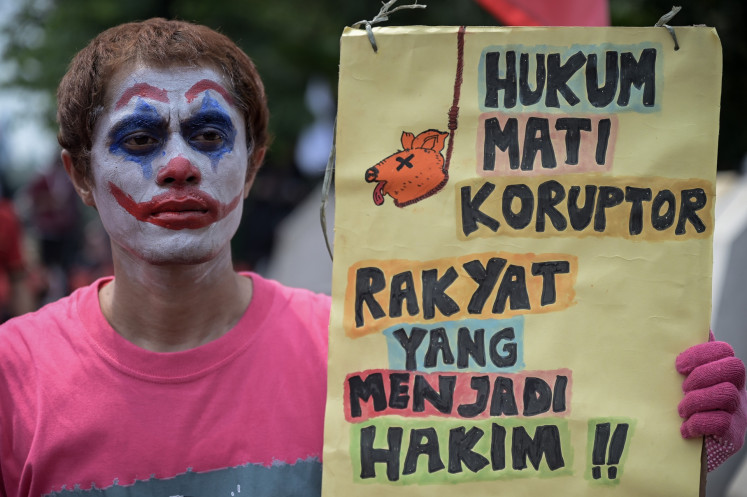Popular Reads
Top Results
Can't find what you're looking for?
View all search resultsPopular Reads
Top Results
Can't find what you're looking for?
View all search resultsWeather engineering to continue until March
The National Disaster Mitigation Agency says that it will continue to modify the weather in Jakarta until March 26 to prevent more inundation in the capital in anticipation of unpredictable rainfall
Change text size
Gift Premium Articles
to Anyone
T
he National Disaster Mitigation Agency says that it will continue to modify the weather in Jakarta until March 26 to prevent more inundation in the capital in anticipation of unpredictable rainfall.
Agency spokesman Sutopo Purwo Nugroho said that the agency had prepared Rp 13 billion (US$1.34 million) for the operations and supporting equipment, including a Hercules and Casa aircraft and 25 ground-based generators to burn flares.
“We will evaluate the operation every 10 days and decide whether we should continue the operation or not,” Sutopo told The Jakarta Post on Sunday. “As of now, we still believe that the modification is necessary to prevent continuous rainfall.”
On Sunday, the ninth day of the operation, the agency said that it had spread more than 60 tons of salt in the skies of Jakarta to press cloud formation.
The measure was taken to prevent massive flooding, as was predicted to occur on Jan. 27 by University of Indonesia water expert Firdaus Ali, as a result of a combination of high rainfall and high sea water level during the full moon.
Jakarta was in a state of emergency for 10 days following the Jan. 17 flood that paralyzed most of the city.
Thomas Djamaluddin from the Institute for Aeronautics and Space (LAPAN), however, said on Saturday that weather engineering was not needed in Jakarta, arguing that the Madden-Jullian oscillation (MJO) showed negative signs and that the monsoon index had also weakened.
The MJO is the largest element of the intra-seasonal variability in the tropical atmosphere. It is characterized by an eastward progression of large regions of both enhanced and suppressed tropical rainfall, observed mainly over the Indian and Pacific oceans.
The factors, as Thomas said, would result in a low rate of cloud formation.
Sutopo said that the agency had noticed that the decreasing level of rainfall in Indonesia, especially in Jakarta, last week was caused by a combination of natural factors as well as the engineering operations.
“True, the decreased level of rainfall last week wasn’t entirely a result of the modifications. However, we cannot predict what will happen in the next couple of weeks. We want to avoid the risks,” Sutopo said. “If we observe the rain trends in Jakarta over the last 30 years, rainfall in February has always been considerably high.”
The city administration had allocated a total of Rp 1.12 trillion to reinforce embankments and dams as well as to acquire land along riverbanks in North Jakarta.
Governor Joko “Jokowi” Widodo also urged residents to revive community service at the neighborhood level, popularly known as “kerja bakti”, which was commonly practiced every Sunday.
“We aim to start a movement to encourage residents to live healthy lifestyles,” Jokowi said on Sunday as quoted by kompas.com. (fzm)










